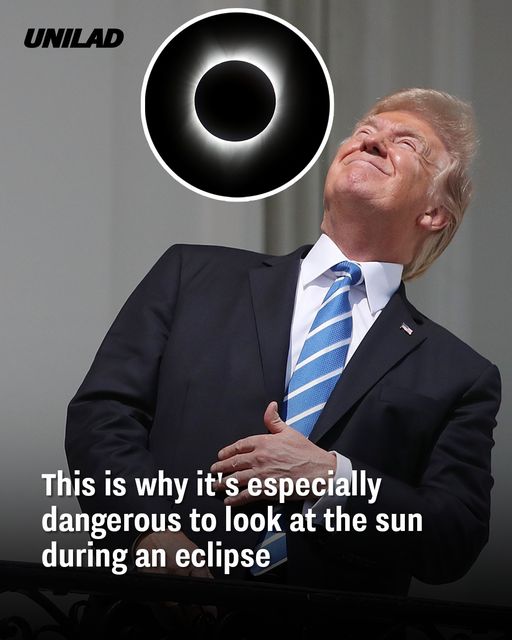That’s not to say you have to miss the eclipse entirely – you just have to take a few safety measures before doing so.
The total solar eclipse will be visible from Mexico to the eastern tip of Canada on Monday (8 April), when the Moon will completely cover the face of the Sun.
It’s a rare phenomenon, and therefore it’s natural to want to turn our heads up to the sky to watch the it unfold.

Getty Stock Photo
Anyone who’s ever made the mistake of looking directly at the Sun will know that it’s an unpleasant experience, but it’s actually a dangerous one too.
Staring at the Sun can lead to permanent eye damage, and that’s still true even when the Moon starts to cover it.
The radiation has the power to burn your retinas, but since the retina doesn’t have pain receptors, you won’t feel the damage as it’s happening.
Once the cells die, they don’t come back, meaning staring at the Sun can cause blindness.
Symptoms of solar eye damage include blurred vision and distortion of color.

Getty Stock Photo
To ensure you don’t miss the eclipse entirely, you can watch it unfold using eclipse glasses, which are designed to block out ultraviolet light from the sun, as well as nearly all visible light.
Experts have warned people hoping to see the eclipse to be on the lookout for counterfeit glasses, and to avoid using binoculars and telescopes without a proper solar filter, as this can actually magnify light from the sun.
NASA Administrator Bill Nelson said: “Please, please put those glasses on.”
Anyone who doesn’t have eclipse glasses can also see the eclipse with a pinhole projector, created by poking a hole through a piece of cardstock or cardboard. You can then hold up the card and look down to see the eclipse projected through the hole.

Getty Stock Photo
There is only one period during the eclipse when it’s safe enough to look up with the naked eye, and that’s when it reaches totality – otherwise known as the moment when the moon completely covers the sun.
According to NASA, the first location in continental North America that will experience totality is Mexico’s Pacific coast at around 11:07am PDT.
The path of the eclipse will then enter the US in Texas before moving through a number of states, including Illinois, Kentucky, Indiana, Ohio, Pennsylvania, New York, and Maine.
The eclipse will then enter Canada in Southern Ontario before exiting on the Atlantic coast of Newfoundland, Canada, at 5:16pm NDT.
For those who are unable to witness the eclipse in person, NASA will be hosting live coverage starting at 1pm EDT.
